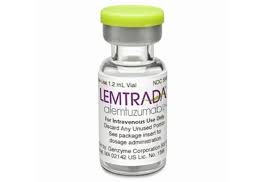As you read this, a group of scientists is doing MS research high above the earth. Their laboratory is in orbit about 250 miles up, aboard the International Space Station.
Working with researchers at the New York Stem Cell Foundation (NYSCF), astronauts have been helping with a study about how astrocytes — cells that hold other cells together in the central nervous system — can be manipulated to halt or prevent nerve damage. To do this, they’re using cells that have been launched to the space station aboard an uncrewed SpaceX rocket.
The researchers are studying organoids, which are cells that have been reprogrammed to mimic brain cells, along with microglia, which are immune cells in the brain that likely play a role in nerve destruction. The hope is that this research will lead to earlier diagnosis of MS and other diseases of the nervous system, as well as to new stem cell and drug therapies.
Why do MS research in space?
Cells act differently in the microgravity of outer space.
“You can simulate microgravity in a laboratory by centrifuge, but those cells are confused,” National Stem Cell Foundation CEO Paula Grisanti told SpaceNews. “And if you’re looking under a microscope on Earth, they’re slightly flattened.” In space, researchers can watch the cells interact in 3D.
The cells sent to the space station are harvested from MS and Parkinson’s disease patients and kept in a small container on the space station called a CubeLab. This allows the cells to be analyzed remotely from Earth. NYSCF researcher Davide Marotta calls the cube “incredible,” adding that it’s “like a full lab in a small cube.”
After a month in orbit, the cells are frozen and sent back to Earth on a return SpaceX flight for further analysis.
Final phase
A SpaceX launch later this year will be the last of four missions to the space station for this project. According to NYSCF Senior Research Investigator Valentina Fossati, this final phase will include studying druglike compounds that might affect nerve-destroying microglia cells and halt the process of neuroinflammation that is typical in MS.
“While the effort is complex, our goal is simple: to continue the work of changing lives and futures through adult stem cell and regenerative medicine research,” the National Stem Cell Foundation’s Grisanti added in a press release last July.
The NYSCF expects to publish its initial findings this year. A finding that would bring us closer to attacking nerve degeneration and inflammation would certainly be out of this world.
(A version of this post first appeared as my column on the MS News Today website.)
(Featured photo by NASA astronaut Thomas Marshburn.)


